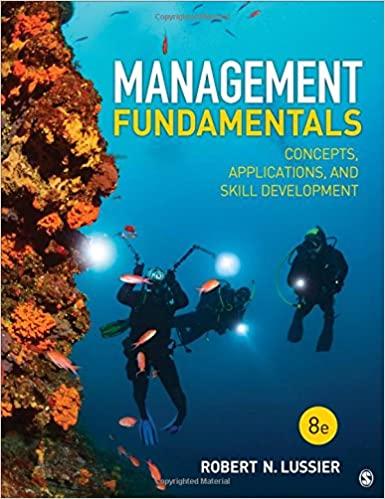This stagecoach likely makes a stop near you. Wells Fargo & Company owns Wells Fargo Bank, which
Question:
This stagecoach likely makes a stop near you. Wells Fargo \& Company owns Wells Fargo Bank, which is one of the largest banks in the US with more than 8,800 bank branches in 40-plus states. Community banking represents Wells Fargo's largest segment. Its wholesale banking arm handles corporate banking across the US and around the world; activities include investment banking and capital markets, securities investment, commercial real estate, and capital finance. ... The firm's three business segments are: Community Banking, serving consumers and small businesses; Wholesale Banking, whose clients include businesses with annual sales in excess of $\$ 5$ million and financial institutions; and Wealth and Investment Management (formerly Wealth, Brokerage and Retirement), a provider of financial advisory services to clients, including ultra-high-worth families and individuals and their endowments and foundations through Abbot Downing.
As a community bank, Wells Fargo asserts it takes its values very seriously.
Our values should guide every conversation, decision, and interaction. Our values should anchor every product and service we provide and every channel we operate.
Its values are embodied in its motto "Creating solutions for stronger communities" with its social responsibility priorities including diversity and social inclusion, economic empowerment and environmental sustainability. Two of its three principles, economic empowerment and environmental sustainability, are critical to its community outreach.
Community reinvestment is an integral part of our culture. We understand that we can be no stronger, nor more successful, than the neighborhoods and communities where we do business.
We are committed to doing our part to accelerate the transition to a lower-carbon economy and reduce the impacts of climate change. We do this by increasing our operational efficiency; advancing clean technology; innovation; and other environmental solutions. We engage our customers, team members, suppliers, and community partners in our efforts to reduce waste, conserve resources, and support resilient communities.
It came as a surprise to many when on February 7, 2017, the Seattle City Council voted to cut ties with banking giant Wells Fargo over its role as a lender to the Dakota Access pipeline project as well as other business practices. (Wells Fargo has said it is one of 17 firms involved in financing the pipeline and is providing $\$ 120$ million of the $\$ 2.5$ billion.) It also called out Wells Fargo for a number of enforcement orders issued against it in recent years. Regulators fined Wells Fargo $\$ 185$ million after employees opened millions of customer accounts fraudulently to meet sales goals.
Seattle's measure came on the same day that the Army told Congress that it would allow the $\$ 3.8$ billion Dakota Access oil pipeline to cross under a Missouri River reservoir in North Dakota, completing the disputed four-state project. The Standing Rock Sioux, whose reservation is just downstream from the pipeline's crossing, feared a leak would pollute the tribe's drinking water. Environmental activists across the country have called on a number of banks to stop financing the construction of the oil pipeline as well as on individuals to pull their money out of those banks.
Wells Fargo managed more than $\$ 3$ billion of Seattle's operating account, processing everything from payroll andvendor payments to revenues collected from city business taxes to city fines. "While we are disappointed that the city has decided to end our 18 -year relationship, we stand ready to support Seattle with its financial services needs in the future," said Tim Brown, Wells Fargo Middle Market Banking regional manager.
In the wake of this announcement, California and Illinois announced they would suspend some business relationships with the bank.
Questions
1. Which external factors/stakeholders are addressed in this case?
2. What artifact(s) embody the culture and underlying values of Wells Fargo?
3. In this case, Wells Fargo's values and beliefs do not seem to match its behavior. Explain.
4. Given your answer to question 3 , how would you characterize the firm's culture (strong or weak)?
5. Classify Wells Fargo's moral development as a firm within the context of this case. Indicate its level of development as per its stated values as well as its level of development given its actions in this case.
6. Using the Guide to Ethical Behavior, apply one of the guides to this case.
7. Given Wells Fargo's actions in this case, at what level of social responsibility would you classify it?
8. Given the movement toward evaluating a firm based upon the triple bottom line, how would you rate Wells Fargo?
Step by Step Answer:






